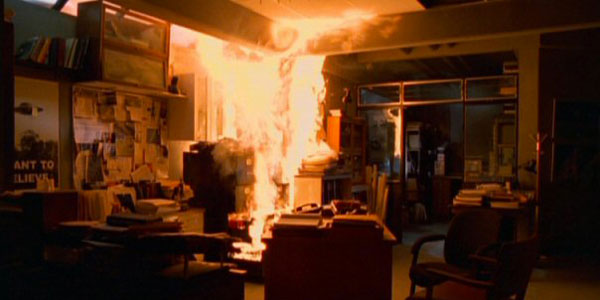October is National Fire Safety Month and while the main focus is on preventing residential fires, it is also a good time to revisit workplace fire safety and prevention. Fatal injuries involving fires and explosions resulted in 148 occupational fatalities in 2013. That coupled with the threat of fire to business equipment and buildings demands that all business owners and safety professionals avoid having a fire emergency.
12 Tips to ensure a fire-safe workplace:
Step 1. Get Organized– Practice good workplace housekeeping. Clutter contributes to fires by providing fuel and by preventing access to exits and emergency equipment.
Step 2. Designated Smoking Areas – Smoke only in designated areas, and extinguish smoking materials safely. Never smoke in storerooms or chemical storage areas.
Step 3. Fire Extinguishers – Maintaining the appropriate type and number of fire extinguishers and learn how to properly use a fire extinguisher.
Step 4. Electrical Hazards – Report all electrical hazards. Many fires start in faulty wiring and malfunctioning electrical equipment.
Step 5. Access to Control Panels – Electrical control panels need to have free access maintained so that the electric could be shut off easily.
Step 6. Maintenance – Maintain machinery to prevent overheating and friction sparks.
Step 7. Sprinkler Systems & Smoke Detectors – Never block sprinklers, firefighting equipment or emergency exits. Observe clearances when stacking materials. Testing of sprinkler systems and smoke detectors at least annually.
Step 8. Chemical Safety – Use and store chemicals safely. Read the label and the Material Safety Data Sheet to determine flammability and other fire hazards. Provide adequate ventilation when using and storing these substances.
Step 9. Waste Control & Storage – Control the accumulations of flammable and combustible waste materials and residues so that they do not contribute to a fire emergency.
Step 10. Prevent Ignition – Use all precautions to prevent ignition in potentially explosive atmospheres such as those containing flammable liquid vapors or fine particles. Use non-sparking tools, and control static electricity as required.
Step 11. Exits – Emergency exit diagrams should be posted and emergency exits should be well lit with neon-regulation signs.
Step 12. Contact Info – Employees should have a list of emergency contact phone numbers in case of emergency. Remember that people will often panic in an intense situation; therefore basics such as the company address, phone number and floor plan should be posted.
Prevention is always better than cure and it’s best to avoid catastrophe in the first place or at least minimize the damage. The simple truth is that fire emergencies and disasters can strike anyone, anytime, anywhere. So if a fire does break out in your workplace A-C-T, Don’t Panic
A – ASSESS THE SITUATION
C – CHOOSE YOUR RESPONSE
T – TAKE ACTION


